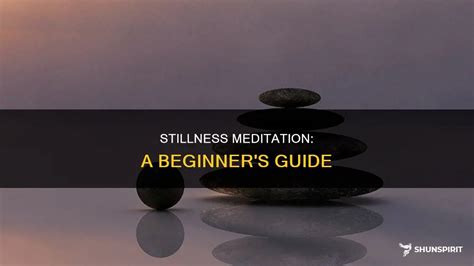The Practice of Stillness for Beginners: Finding Peace in a Hectic World
In today's fast-paced world, the ability to find stillness is a valuable, often elusive, skill. Constant stimulation from technology, work, and social pressures leaves many feeling overwhelmed and disconnected from themselves. But the practice of stillness, far from being passive, is a powerful tool for cultivating inner peace, improving focus, and enhancing overall well-being. This guide offers a beginner-friendly introduction to the practice, addressing common questions and offering practical techniques.
What is Stillness, and Why Practice It?
Stillness isn't about becoming inactive; it's about cultivating a state of inner calm amidst external activity. It's about quieting the mental chatter, slowing down the racing thoughts, and connecting with your inner self. The benefits are numerous:
- Reduced Stress and Anxiety: Stillness helps regulate the nervous system, reducing the production of stress hormones like cortisol.
- Improved Focus and Concentration: By quieting the mind, you create space for clearer thinking and enhanced focus.
- Increased Self-Awareness: Stillness allows you to observe your thoughts and emotions without judgment, leading to greater self-understanding.
- Enhanced Creativity and Intuition: A quiet mind is often a more creative mind, allowing for intuitive insights and breakthroughs.
- Better Sleep: The relaxation fostered through stillness promotes deeper, more restful sleep.
How Do I Start Practicing Stillness? Simple Techniques for Beginners
Starting your stillness journey doesn't require elaborate rituals or years of experience. Begin with these simple yet powerful techniques:
1. Mindful Breathing: This is the cornerstone of many stillness practices. Find a comfortable position, close your eyes (or soften your gaze), and focus on your breath. Notice the sensation of the air entering and leaving your nostrils, the rise and fall of your chest or abdomen. When your mind wanders (and it will!), gently redirect your attention back to your breath. Even 5 minutes of mindful breathing can make a significant difference.
2. Body Scan Meditation: Lie down or sit comfortably. Bring your awareness to different parts of your body, starting with your toes and moving slowly upwards. Notice any sensations—tingling, warmth, tension—without judgment. Simply observe. This helps connect you with your physical self and release bodily tension.
3. Nature Walks: Immersing yourself in nature is a natural way to cultivate stillness. Pay attention to the sights, sounds, and smells around you. Feel the earth beneath your feet. The rhythmic movement and natural beauty of the environment can be incredibly calming.
4. Mindful Movement: Gentle forms of movement like yoga or Tai Chi can be incorporated into your stillness practice. The focus on breath and movement helps to quiet the mind and release tension.
5. Guided Meditations: Many guided meditations are available online or through apps. These can provide structure and support, especially when starting out.
How Long Should I Practice Stillness Each Day?
There's no magic number. Even a few minutes of daily practice can yield significant benefits. Start with 5-10 minutes and gradually increase the duration as you feel comfortable. Consistency is key; short, regular sessions are more effective than infrequent, longer ones.
Is It Normal to Feel Frustrated or Anxious During Stillness Practice?
Yes! It's completely normal to experience restlessness, frustration, or even anxiety when first beginning a stillness practice. Your mind is used to constant stimulation, so initially, the quiet may feel unsettling. Be patient and kind to yourself. The more you practice, the easier it will become to quiet your mind and find a sense of inner peace. Remember, the goal isn't to eliminate thoughts entirely, but to observe them without judgment and gently redirect your attention back to your chosen focus.
What if I Can't Stop My Mind from Racing?
The wandering mind is a common experience in stillness practices. Don't get discouraged. When you notice your thoughts drifting, simply acknowledge them without judgment, and gently guide your attention back to your breath or your chosen focus. Think of it like training a playful puppy; it takes time and patience, but with consistent practice, you'll gradually improve your ability to focus.
Can Stillness Practices Help With Specific Issues Like Anxiety or Insomnia?
Absolutely! Stillness practices have been shown to be effective in managing anxiety, insomnia, and other stress-related conditions. By calming the nervous system and reducing mental chatter, they can help alleviate symptoms and promote a sense of well-being. However, if you're experiencing significant mental health challenges, it's crucial to seek professional help from a therapist or counselor in addition to incorporating stillness practices into your self-care routine.
By incorporating even a few minutes of stillness into your daily routine, you can begin to cultivate a greater sense of peace, focus, and well-being. Remember to be patient and compassionate with yourself throughout the process. The journey to stillness is a personal one, and the rewards are immeasurable.

